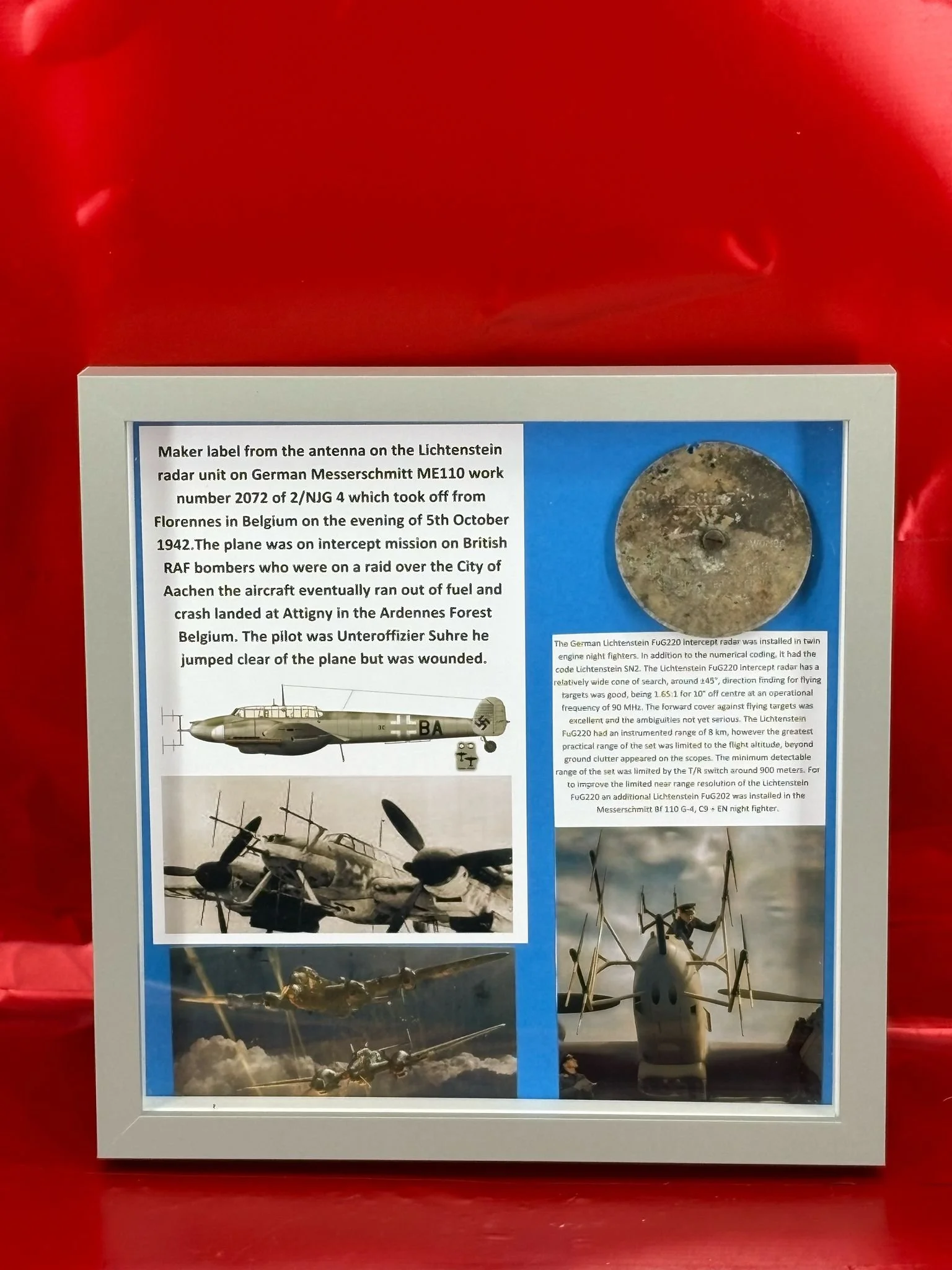 Image 1 of 10
Image 1 of 10

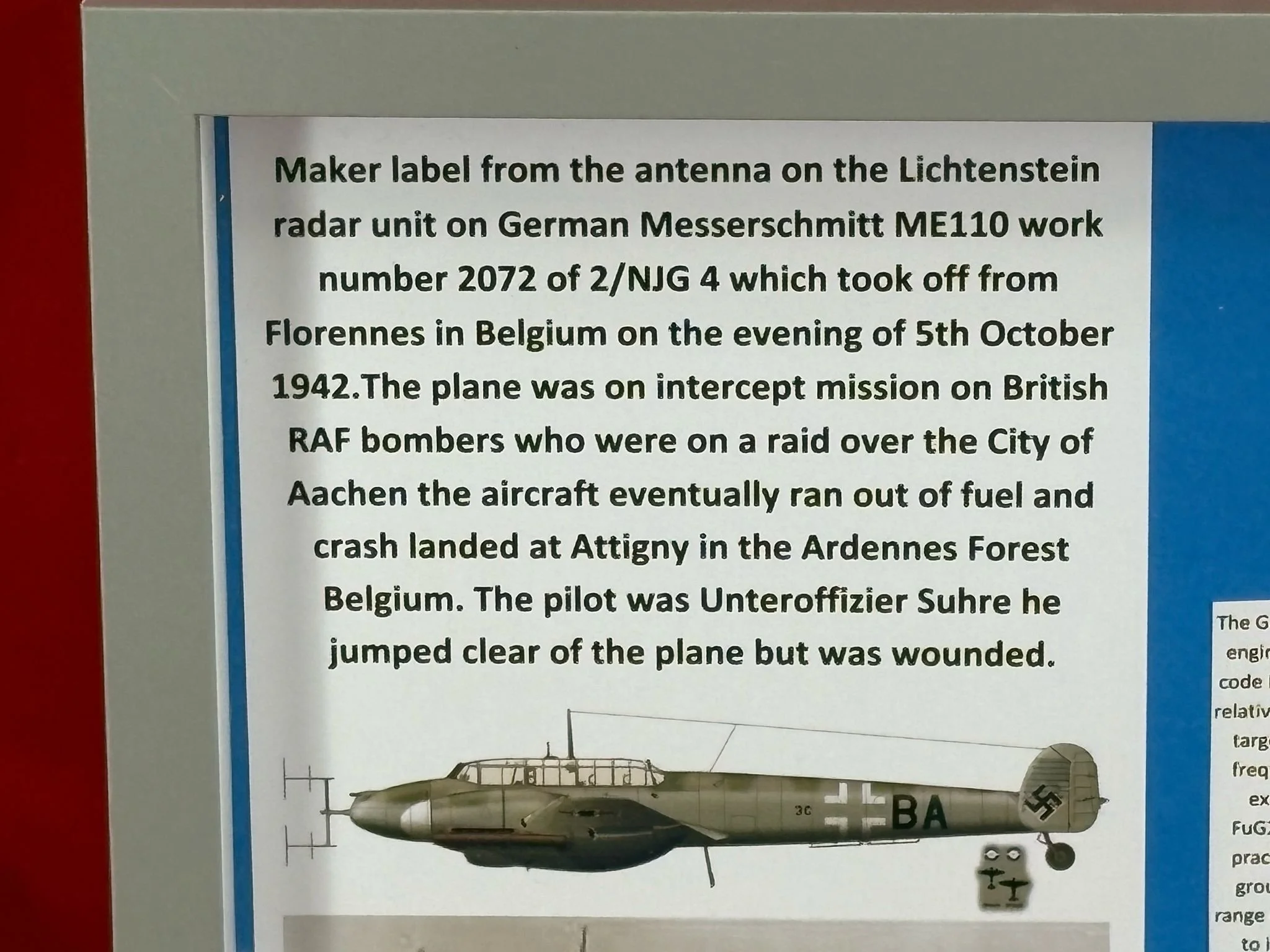 Image 2 of 10
Image 2 of 10

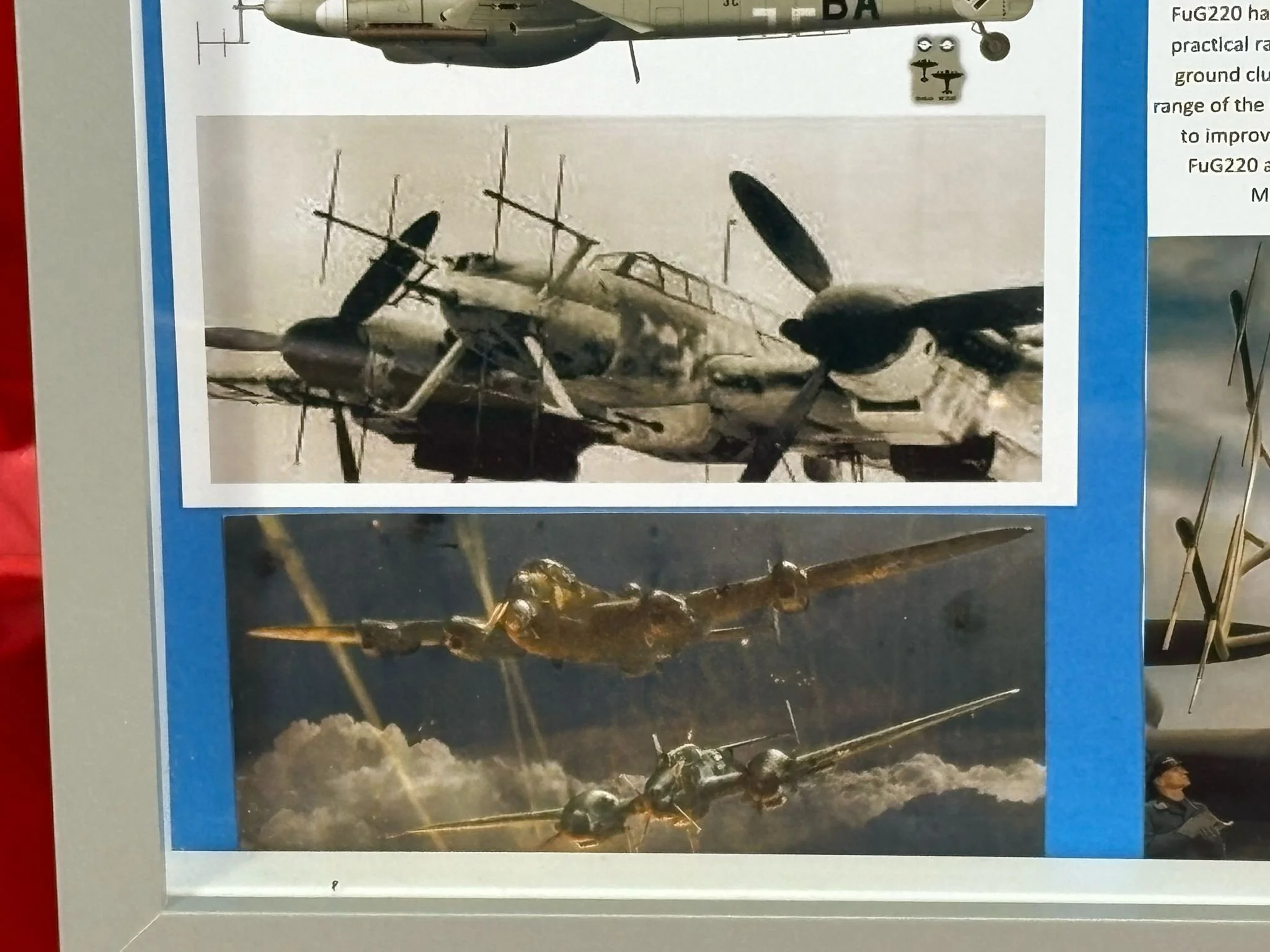 Image 3 of 10
Image 3 of 10

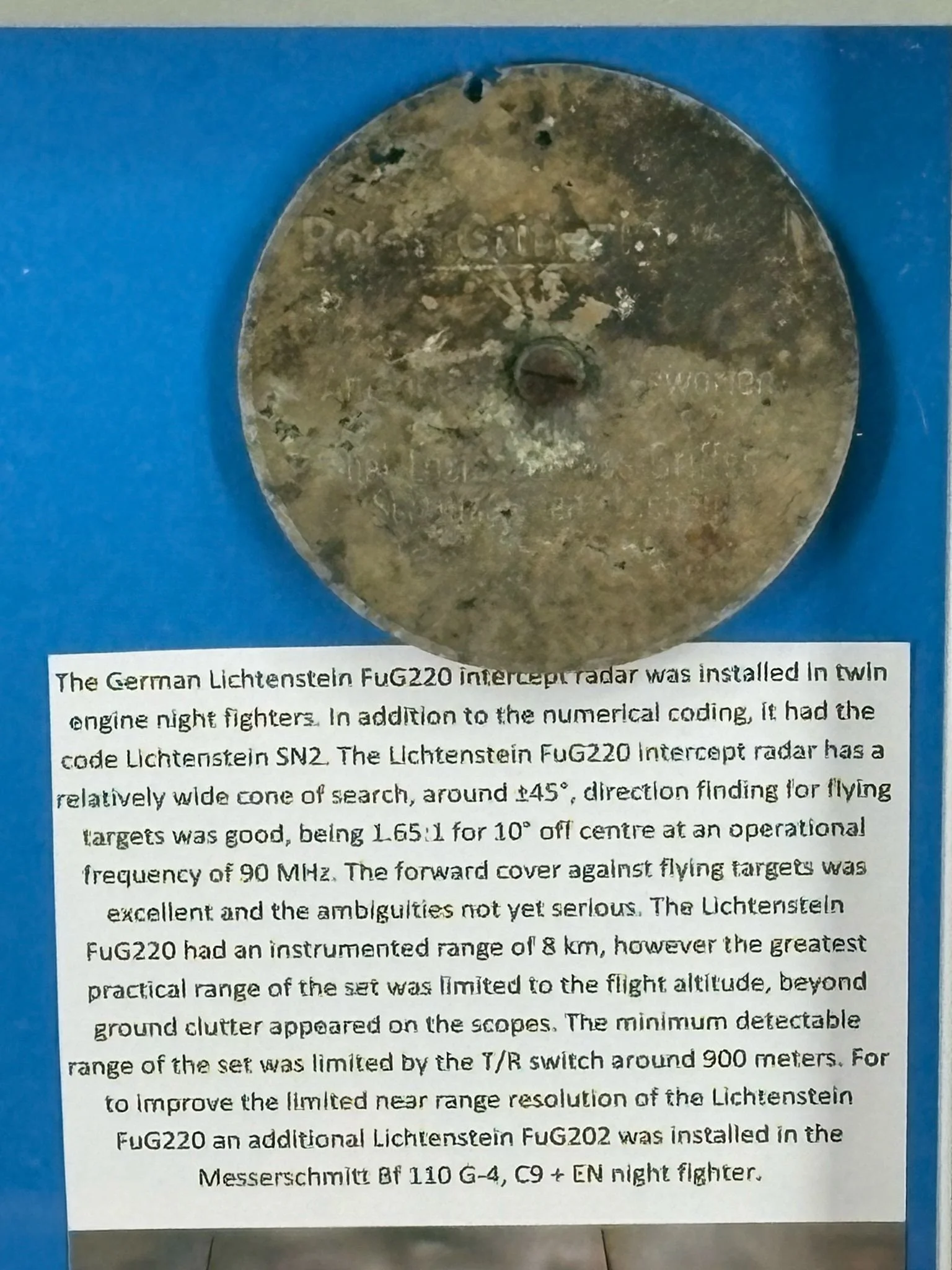 Image 4 of 10
Image 4 of 10

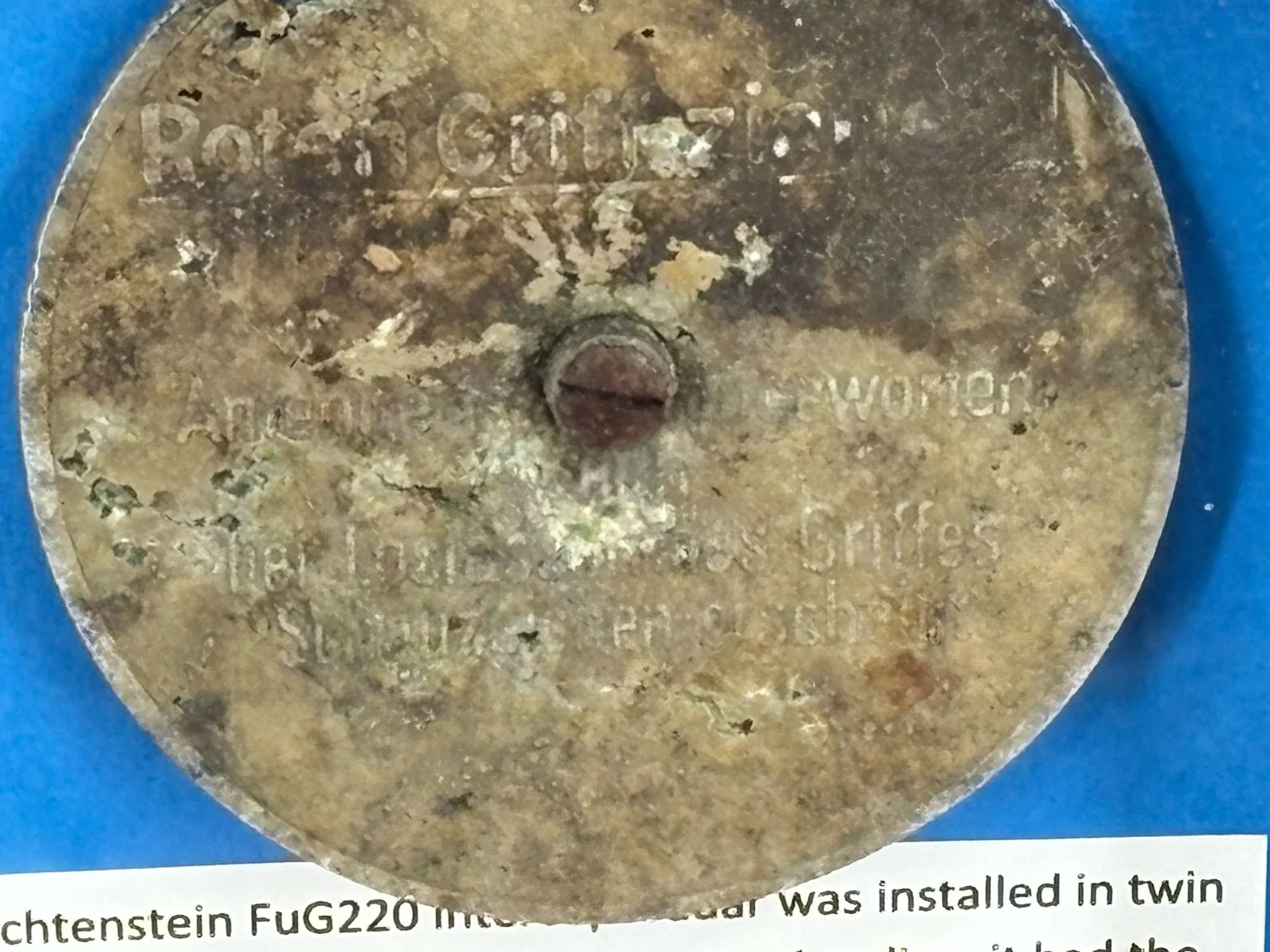 Image 5 of 10
Image 5 of 10

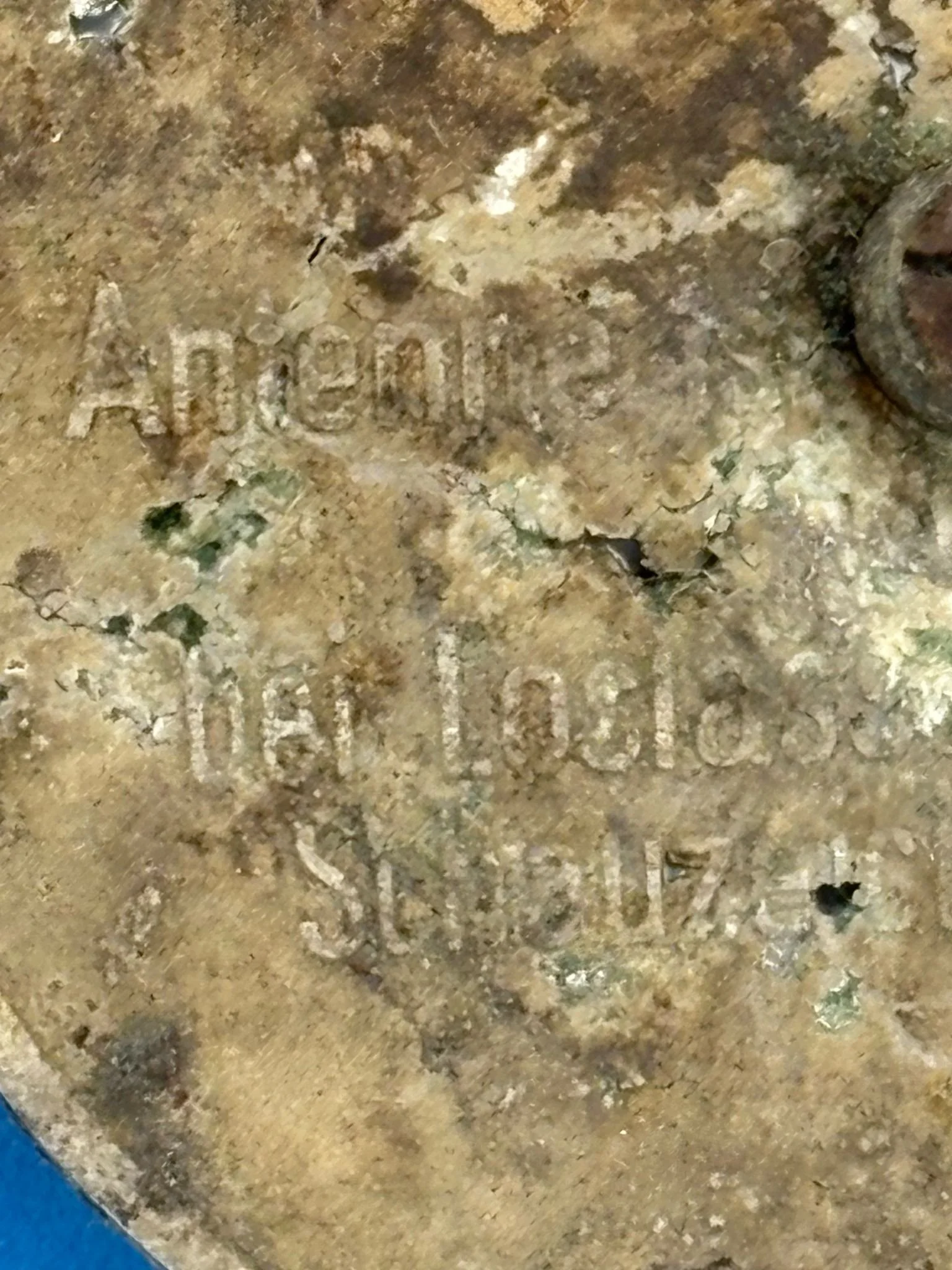 Image 6 of 10
Image 6 of 10

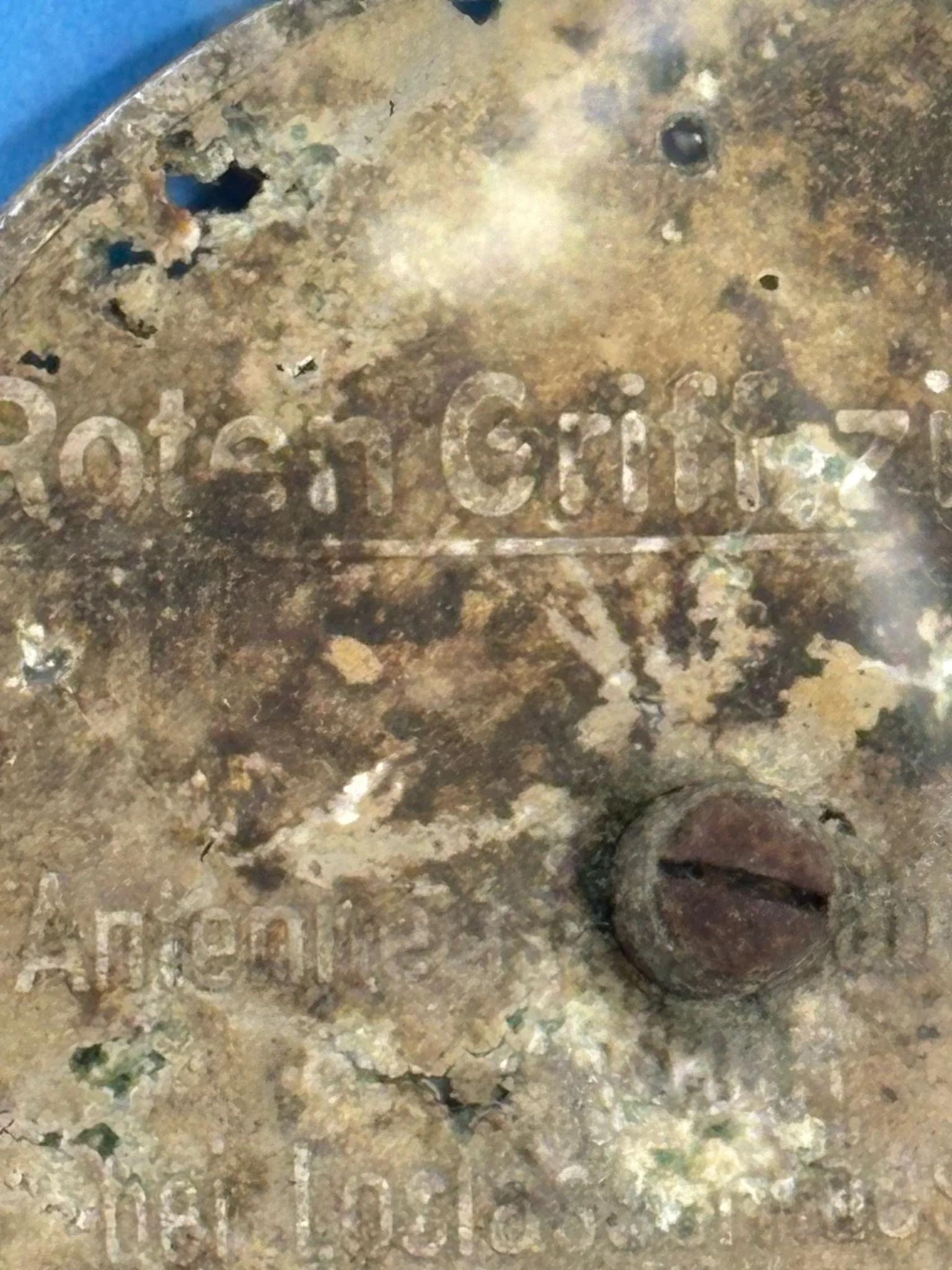 Image 7 of 10
Image 7 of 10

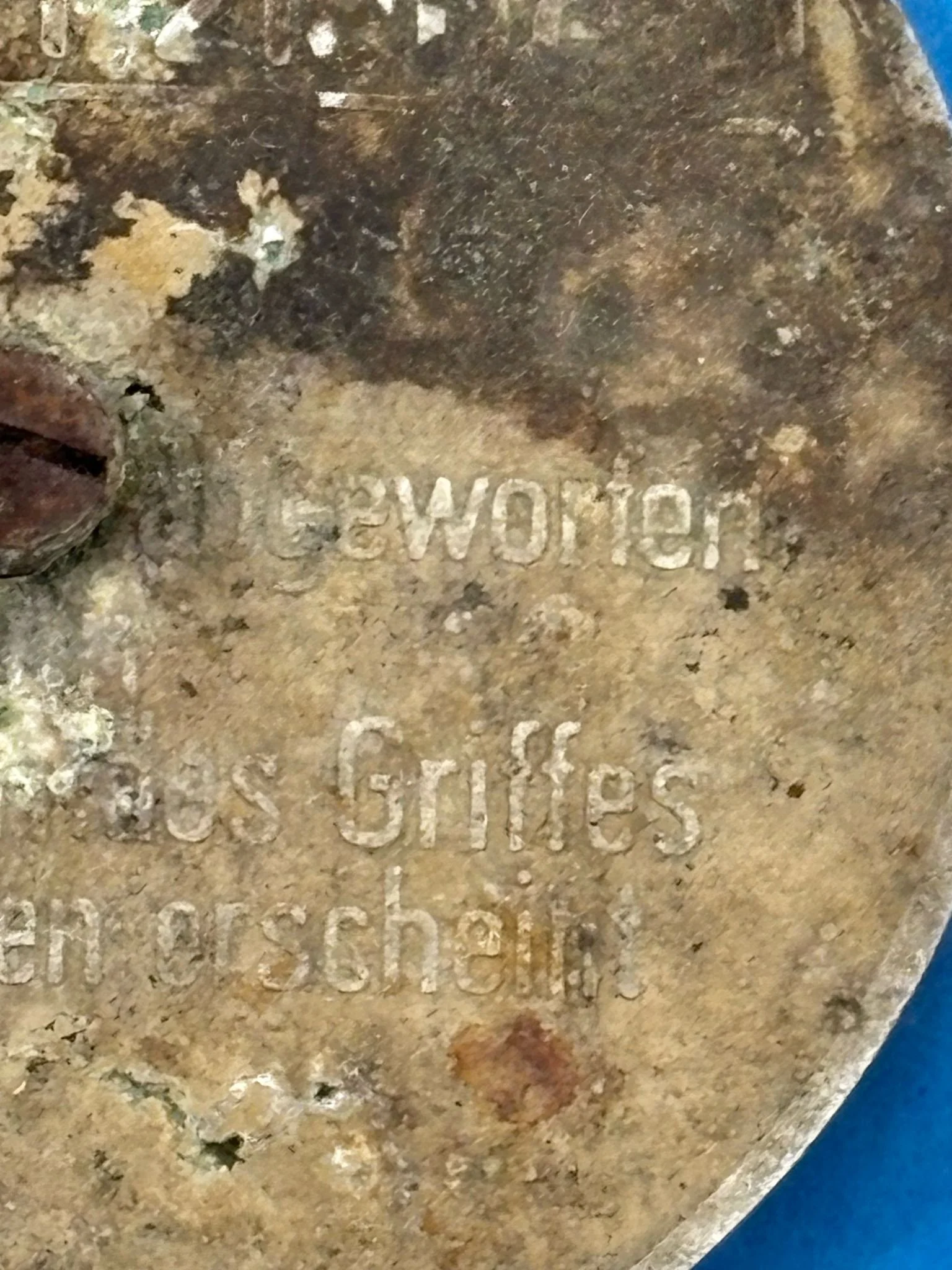 Image 8 of 10
Image 8 of 10

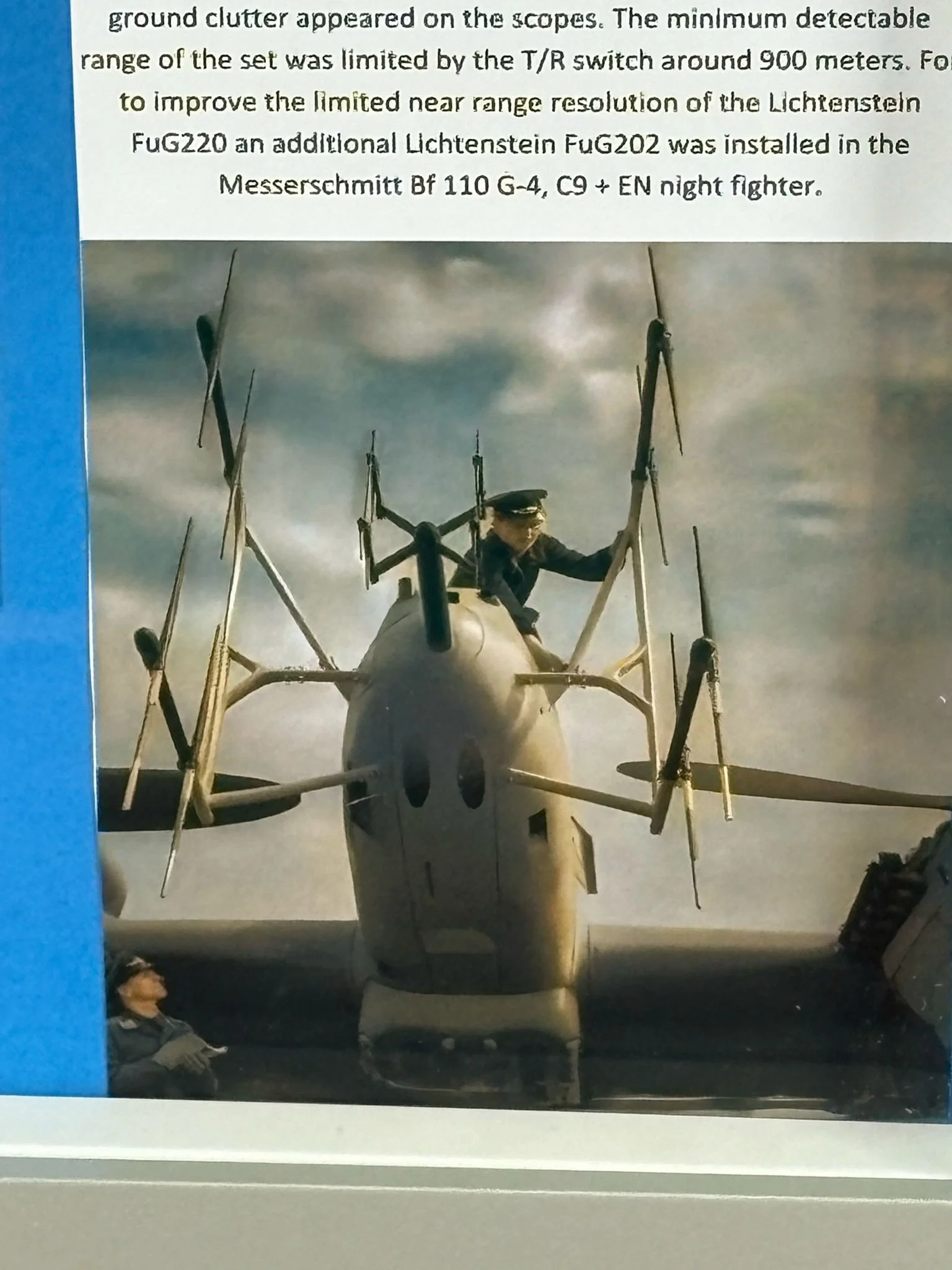 Image 9 of 10
Image 9 of 10

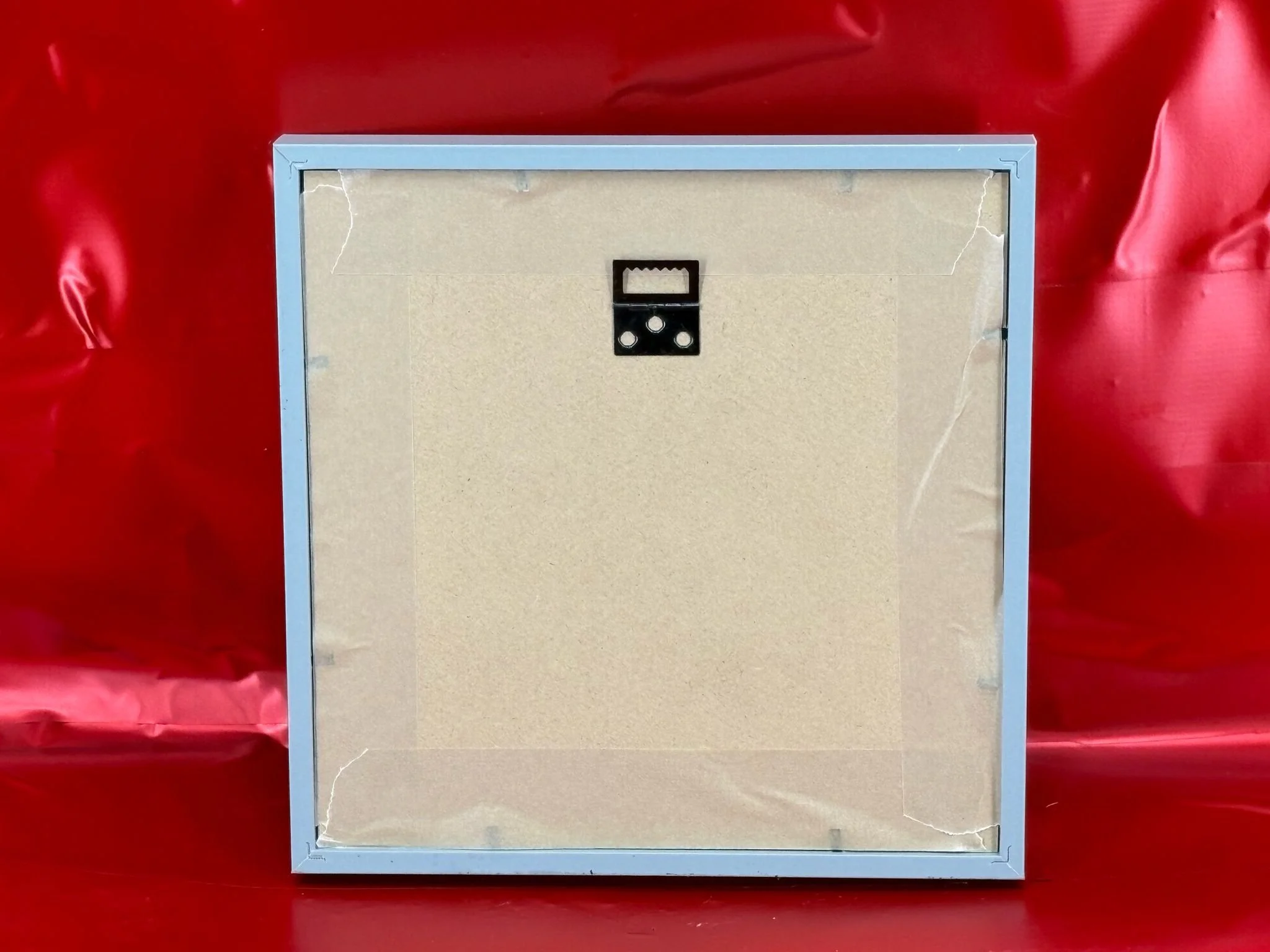 Image 10 of 10
Image 10 of 10











Glass framed maker label from the antenna on the Lichtenstein radar unit on German Messerschmitt ME110 number 2072,NJG 4/NJG4 shot down on 5th October 1942 crashed in the Ardennes
This is a rare item which has been glass-framed, a Lichtenstein radar unit label, with several markings still visible and some original colouring preserved. Believed to be connected with the antenna system on the front of the aircraft, the label is in relic but solid condition, carefully cleaned and mounted for preservation. It has been presented in a glass-fronted display box, accompanied by detailed information and photographs. The frame measures 10 inches by 10 inches, making it a striking display piece.
The part originates from a German Messerschmitt Bf 110, Werknummer 2072, of 2./NJG 4. On the evening of 5th October 1942, the aircraft took off from Florennes in Belgium on an intercept mission against RAF bombers raiding the city of Aachen. Running out of fuel, it crash-landed at Attigny in the Ardennes Forest, Belgium. The pilot, Unteroffizier Suhre, managed to jump clear but sustained injuries.
The Lichtenstein FuG 220 SN-2 radar was a vital component of German night-fighter operations, typically installed in twin-engine aircraft such as the Bf 110. It offered a relatively wide cone of search at 45, with good direction-finding capabilities1.65:1 at 10 off-centre operating at 90 MHz. Its instrumented range was 8 km, although in practice it was limited by altitude and interference from ground clutter. Minimum detection was restricted to about 900 meters due to the T/R switch. To improve short-range resolution, the FuG 220 was often paired with the earlier Lichtenstein FuG 202 in Bf 110 G-4 night fighters, such as the C9+EN variant.
This rare label, mounted and preserved with supporting material, offers a tangible connection to the technological innovations of German night-fighting tactics during the Second World War.
This is a rare item which has been glass-framed, a Lichtenstein radar unit label, with several markings still visible and some original colouring preserved. Believed to be connected with the antenna system on the front of the aircraft, the label is in relic but solid condition, carefully cleaned and mounted for preservation. It has been presented in a glass-fronted display box, accompanied by detailed information and photographs. The frame measures 10 inches by 10 inches, making it a striking display piece.
The part originates from a German Messerschmitt Bf 110, Werknummer 2072, of 2./NJG 4. On the evening of 5th October 1942, the aircraft took off from Florennes in Belgium on an intercept mission against RAF bombers raiding the city of Aachen. Running out of fuel, it crash-landed at Attigny in the Ardennes Forest, Belgium. The pilot, Unteroffizier Suhre, managed to jump clear but sustained injuries.
The Lichtenstein FuG 220 SN-2 radar was a vital component of German night-fighter operations, typically installed in twin-engine aircraft such as the Bf 110. It offered a relatively wide cone of search at 45, with good direction-finding capabilities1.65:1 at 10 off-centre operating at 90 MHz. Its instrumented range was 8 km, although in practice it was limited by altitude and interference from ground clutter. Minimum detection was restricted to about 900 meters due to the T/R switch. To improve short-range resolution, the FuG 220 was often paired with the earlier Lichtenstein FuG 202 in Bf 110 G-4 night fighters, such as the C9+EN variant.
This rare label, mounted and preserved with supporting material, offers a tangible connection to the technological innovations of German night-fighting tactics during the Second World War.
